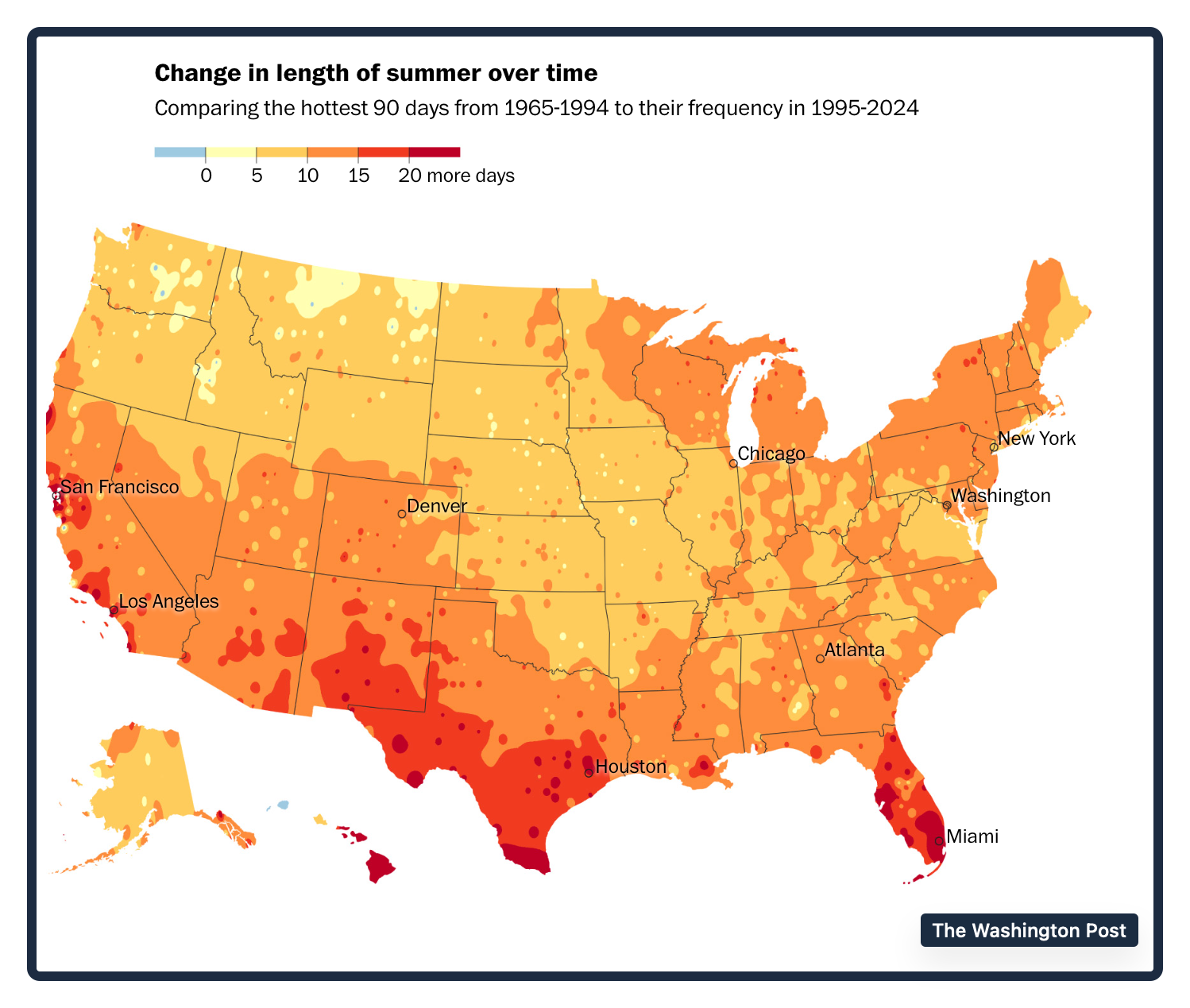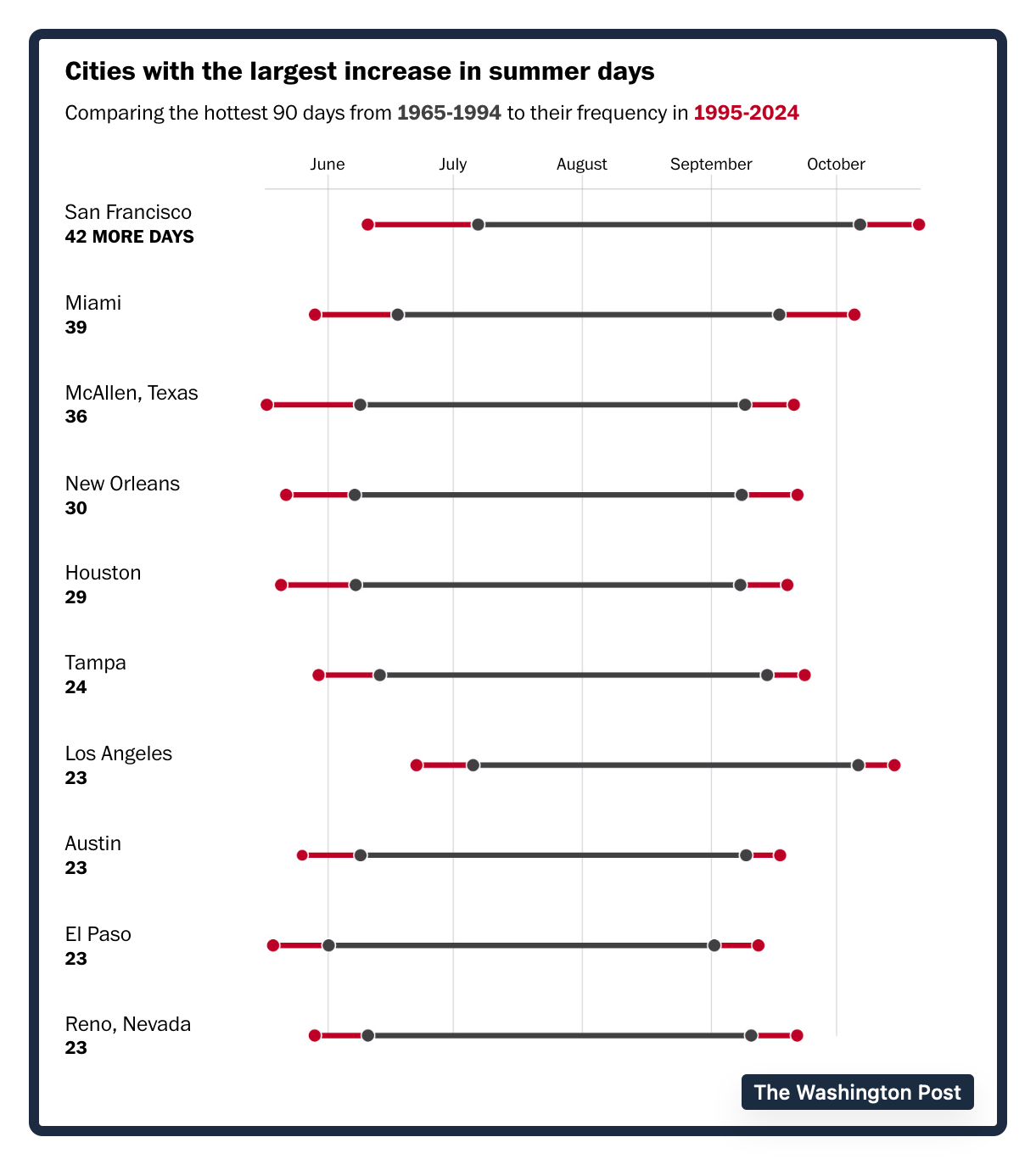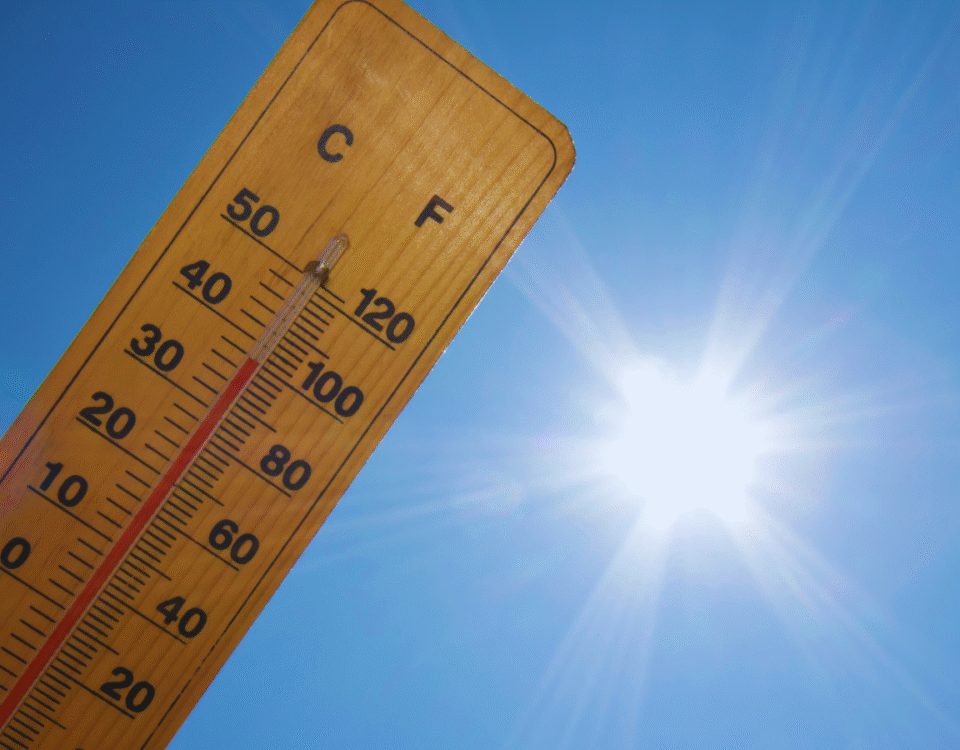
How the Fed Disagrees With “The Economist”
August 25, 2025
Why, Where, and How We Waste Food
August 27, 2025While my summers always seem to be too short, they are actually longer.
The Washington Post told us where.
Longer Summers
By what metric can we say that our summers are hotter?
- We can check if temperatures rise before the calendar start of summer.
- Similarly, we can note if the heat lasts after the date that summer ends.
- And finally, we can ask whether peak temperatures are higher.
The answer to all three is yes, yes, yes.
Extending almost everywhere in the U.S., summers are noticeably longer in parts of California and the South:

When researchers compared 1965-1994 and 1995-2024, they reported that San Francisco, at 42, was #1 for extra days. Then, Miami (39) and McAllen, Texas (36) came next in a long list of cities.
I’ve copied the top ten:

Lastly, as for our third metric, peak temperatures are up. According to a study from Climate Central, 200 major U.S. cities recorded summer temperatures that rose by approximately 2.6 degrees Fahrenheit during the past 55 years.
Our Bottom Line: Heat Economics
In countless ways, heat has a cost.
First, most of us think of its outdoor impact. We know that heat hits crop pickers, delivery people, and dog walkers. Also, it damages crops, stresses roadways, and accelerates fires.
Moving indoors, heat stresses power grids and multiplies power outages. During July 2023, heat diminished oil refinery output. At the same time, the manufacturing employees that lacked air conditioning were hit hard. Working when temperatures exceed 90 degrees, people get so dizzy and nauseous that they have to go home temporarily or permanently. Those that remain need more breaks and make the mistakes that mental fuzziness can create. In one Kansas meatpacking plant, employees reported foggy goggles that blurred their vision.
Computing the impact, economists estimate that at 90 degrees, heat reduces productivity by 25 percent. At 100 degrees, it’s a whopping 70 percent decrease. And together, answering today’s title’s question, the cost is more public spending and less worker productivity.
My sources and more: Thanks to The Washington Post for inspiring today’s post. From there we returned to a NY Times article, CNN, and econlife from 2023.
![econlifelogotrademarkedwebsitelogo[1]](/wp-content/uploads/2024/05/econlifelogotrademarkedwebsitelogo1.png#100878)




